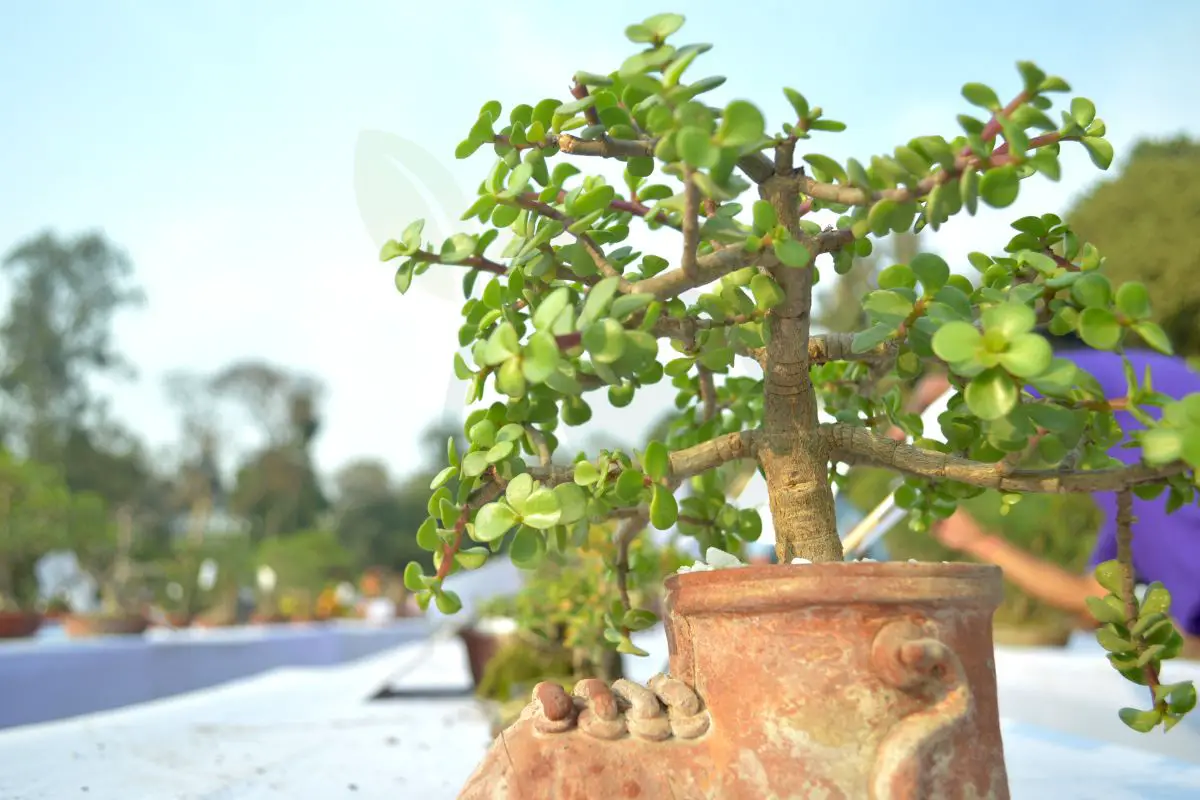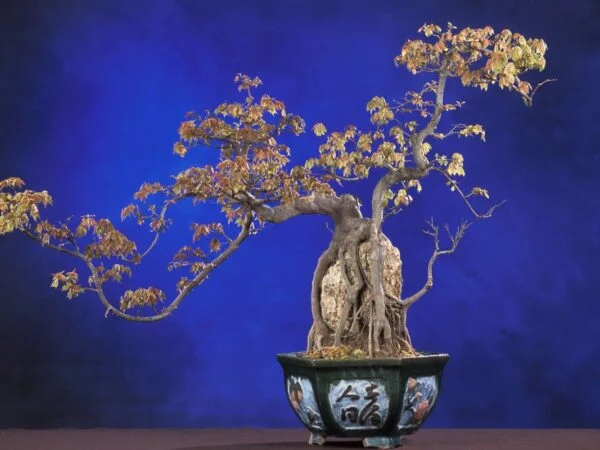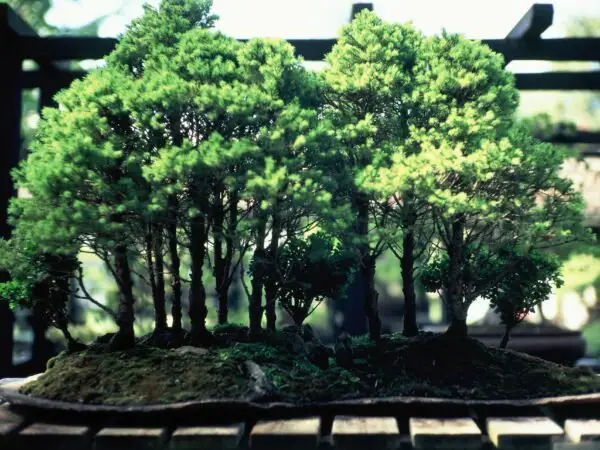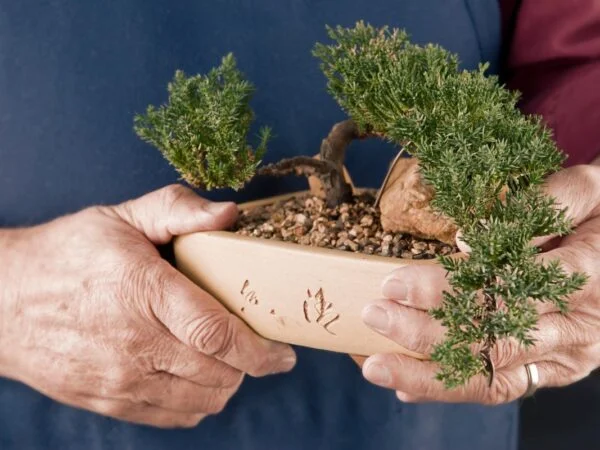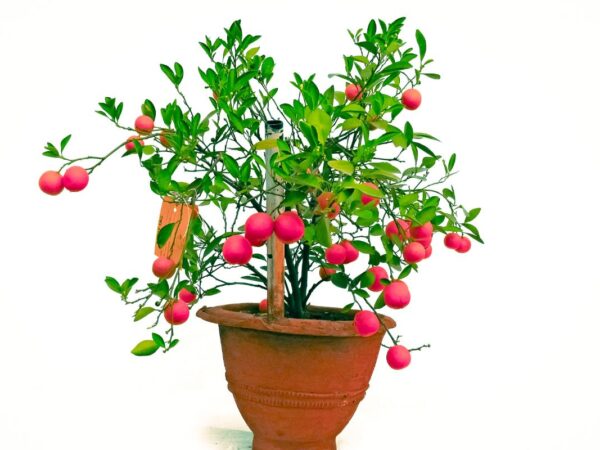Are you looking for expert advice on Jade Bonsai Tree Care? Look no further! We're here to provide you with all the essential information, including watering instructions, to ensure your Jade Bonsai, with its fleshy leaves, thrives.
Jade Bonsai trees, scientifically known as Crassula ovata, are renowned for their resilience and ease of care. These miniature marvels, originating from South Africa, like jades, require minimal maintenance, making them ideal for both novice and experienced bonsai enthusiasts. To care for your Jade Bonsai, ensure it receives ample sunlight, preferably four to six hours per day, and water sparingly, allowing the soil to dry out between watering sessions. Additionally, it's crucial to provide well-draining soil and avoid overwatering, as excessive moisture can lead to root rot. Regular pruning is necessary to maintain its desired shape and encourage healthy growth. With proper care, watering your Jade Bonsai will flourish, gracing your space with its captivating beauty for years to come.
For further insights into Jade Bonsai Tree Care, explore specialized resources, engage with bonsai communities, water, or consult with experienced growers. Delve deeper into techniques such as styling, repotting, and pest management to ensure optimal health and longevity for your prized Jade Bonsai. With dedication and knowledge, you can cultivate a stunning masterpiece that brings joy and tranquility to any environment.
Key Takeaways
- Start with Healthy Cuttings: Begin your jade bonsai journey with healthy cuttings to ensure a strong foundation for your plant.
- Regular Pruning is Key: Embrace pruning techniques to shape and maintain the desired form of your jade bonsai tree.
- Prioritize Root Care: Pay attention to root care by repotting when necessary and ensuring proper drainage for optimal growth.
- Stay Vigilant Against Pests: Implement pest management strategies to protect your jade bonsai from common pests like spider mites and mealybugs.
- Choose Placement Wisely: Place your jade bonsai in a spot with adequate sunlight and proper airflow to promote healthy growth.
- Troubleshoot with Knowledge: Be prepared to troubleshoot common issues like yellowing leaves or root rot promptly to keep your jade bonsai thriving.
Jade Bonsai Basics
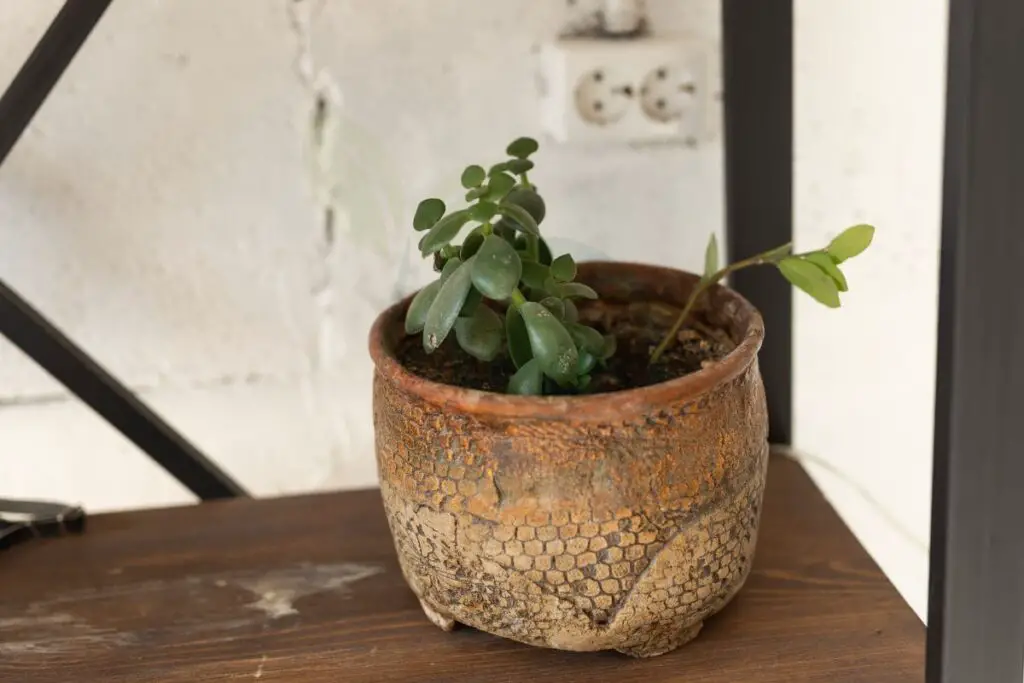
Characteristics
Jade bonsai trees are known for their thick trunks and small, round leaves, which give them a unique appearance. These characteristics are a result of the natural habitat of Jade trees, typically found in arid regions with limited water supply. When cultivated as bonsai, these features translate into a compact and sturdy tree that symbolizes good luck and prosperity in various cultures.
Growth Habits
Jade bonsai trees exhibit slow growth patterns due to their ability to store water in their leaves, making them resilient during dry periods. They can adapt well to different environments and climates, thriving in both indoor and outdoor settings. Understanding these growth habits is crucial for shaping and caring for Jade bonsai trees effectively, ensuring they remain healthy and vibrant over time.
Care Requirements
To ensure the health of Jade bonsai trees, it is essential to meet their specific care needs. This includes regular watering, ensuring the soil is well-draining to prevent root rot, providing ample sunlight without exposing them to direct midday sun, and using appropriate bonsai soil mixtures that promote growth. Regular monitoring and maintenance are key to identifying any issues early on and addressing them promptly to prevent damage.
Addressing common problems that may arise from improper care practices such as overwatering or inadequate sunlight exposure is crucial in maintaining the overall well-being of Jade bonsai trees. By following these care requirements diligently, enthusiasts can enjoy the beauty and longevity of these unique plants in their bonsai form.
Starting with Cuttings
Choosing Cuttings
When selecting cuttings for propagating Jade bonsai trees, look for healthy branches without any signs of disease or damage. Ensure the cutting has at least two sets of leaves. The right cutting is crucial for successful rooting and growth.
Identify suitable branches by choosing ones that are young and flexible. Avoid selecting old, woody branches as they are less likely to root successfully. Look for branches that have a vibrant green color and are free from pests or diseases.
Rooting Process
To root Jade bonsai tree cuttings, start by preparing the cutting by removing excess leaves and dipping the end in rooting hormone. Plant the cutting in well-draining soil and keep it moist but not waterlogged. Proper moisture levels and soil conditions are essential for successful root development.
During the rooting process, common challenges include rotting due to excessive moisture or drying out from inadequate watering. To overcome these challenges, monitor the soil moisture regularly and adjust watering accordingly. Provide indirect sunlight to promote healthy growth.
Initial Potting
After rooting, carefully transfer the newly rooted Jade bonsai tree cuttings into pots. Choose a pot that is slightly larger than the root ball to allow room for growth. Use a well-draining soil mixture suitable for bonsai trees to prevent waterlogging.
When potting the cuttings, handle them gently to avoid damaging the delicate roots. Water the newly potted cuttings lightly to settle the soil around the roots. Place the pots in a location with bright, indirect sunlight to encourage further growth.
Essential Care Guidelines
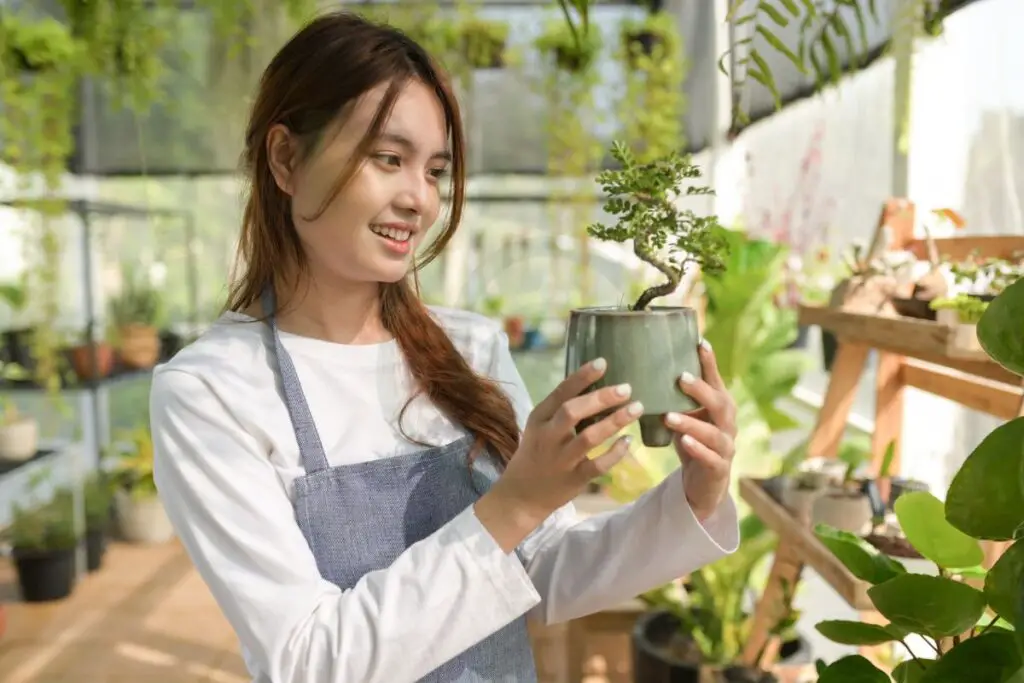
Watering Guide
Frequency
- Watering: Jade bonsai trees require infrequent watering, typically every 7-14 days depending on the season and climate.
- Fertilizing: During the growing season, fertilize every 4-6 weeks to support healthy growth.
- Pruning: Regular pruning is essential to maintain the tree's shape and promote new growth.
- Repotting: Repot Jade bonsai trees every 2-3 years to refresh the soil and encourage root development.
Seasonal variations play a crucial role in care routines. In spring and summer, increase watering frequency and fertilization to support active growth. In fall and winter, reduce watering to prevent root rot during dormancy. Pruning should be done in early spring before new growth emerges.
A general schedule for maintaining Jade bonsai trees throughout the year includes weekly checks for moisture levels, monthly fertilization during the growing season, biennial repotting, and regular pruning as needed.
Techniques
- Advanced techniques like wiring and pruning are used to shape and style Jade bonsai trees effectively.
- Wiring helps bend branches into desired positions, while pruning controls growth direction and enhances tree aesthetics.
Different techniques can achieve various bonsai styles such as formal upright, informal upright, slanting, cascade, semi-cascade, and literati. Mastery of these techniques is crucial for creating visually appealing bonsai designs that reflect natural tree shapes.
Feeding Schedule
- Create a feeding schedule by fertilizing Jade bonsai trees every 4-6 weeks during the growing season from spring to early fall.
- Nutrients from fertilizer are essential for promoting strong roots, vibrant foliage, and overall tree health.
Choose a balanced liquid fertilizer with equal parts nitrogen, phosphorus, and potassium for optimal results. Apply fertilizer diluted in water to avoid root burn and ensure even distribution of nutrients throughout the soil.
Sunlight Needs
- Sunlight Requirements: Place Jade bonsai trees where they receive at least 4-6 hours of direct sunlight daily for healthy growth.
- Effects of Inadequate Sunlight: Insufficient light can lead to leggy growth, weak branches, pale leaves, and overall poor health.
Position your Jade bonsai tree near a south-facing window or under grow lights to maximize sunlight absorption. Rotate the tree periodically to ensure all sides receive adequate light exposure for balanced growth.
Pruning Techniques
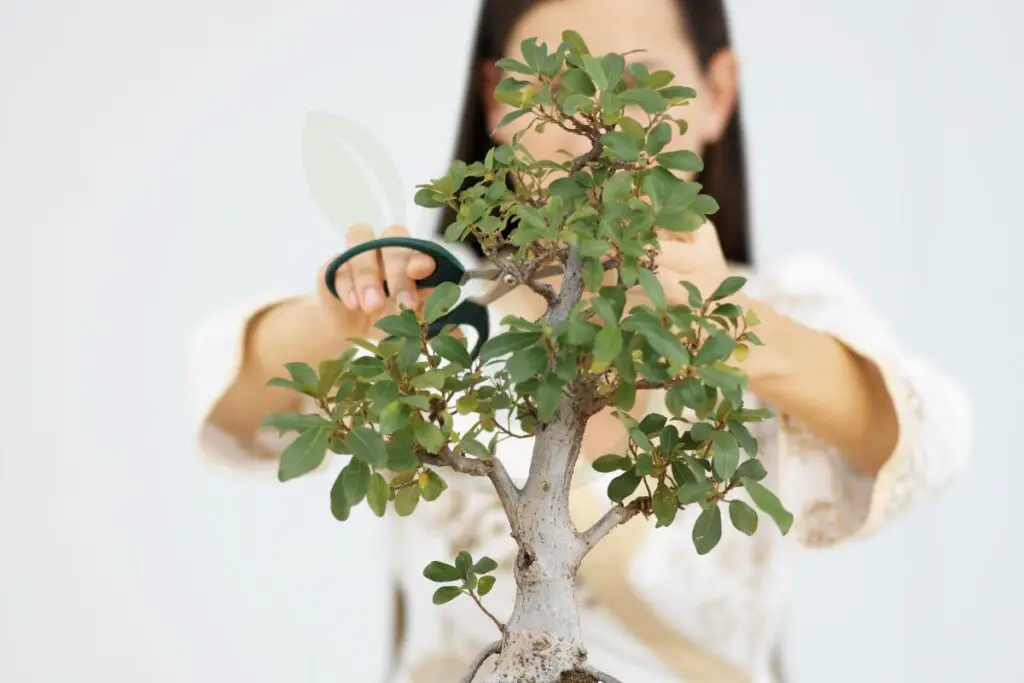
Shaping Bonsai
Shaping Jade bonsai trees involves precise pruning and wiring techniques. Different styles, like formal upright or cascade, can be achieved through shaping. Popular shapes include informal upright, slanting, and windswept styles.
Creating these shapes with Jade trees requires careful pruning to maintain the desired form. Wiring can also be used to guide branches into specific positions for aesthetic appeal. For instance, the informal upright style mimics a tree standing tall in nature.
Pruning Timing
Pruning Jade bonsai trees at the right times is crucial for healthy growth and shape development. Timing affects how the tree responds to pruning stress. Early spring is ideal for major pruning to stimulate new growth, while light trimming can be done throughout the year.
Prune branches after they have produced new leaves to ensure the tree has enough energy reserves for recovery. Avoid heavy pruning during dormancy periods as it may weaken the tree. Regularly inspect the tree for dead or overgrown branches that need pruning.
Tools Required
Essential tools for maintaining Jade bonsai trees include pruning shears, wire cutters, and concave cutters. Pruning shears are used for general trimming, while wire cutters help shape branches by applying wires. Concave cutters are essential for clean cuts that promote healing.
Each tool serves a specific purpose in bonsai care. Pruning shears are versatile enough to handle most trimming tasks efficiently. Wire cutters are crucial for safely removing wires without damaging branches. Using high-quality tools ensures precision and reduces stress on the tree.
Root Care
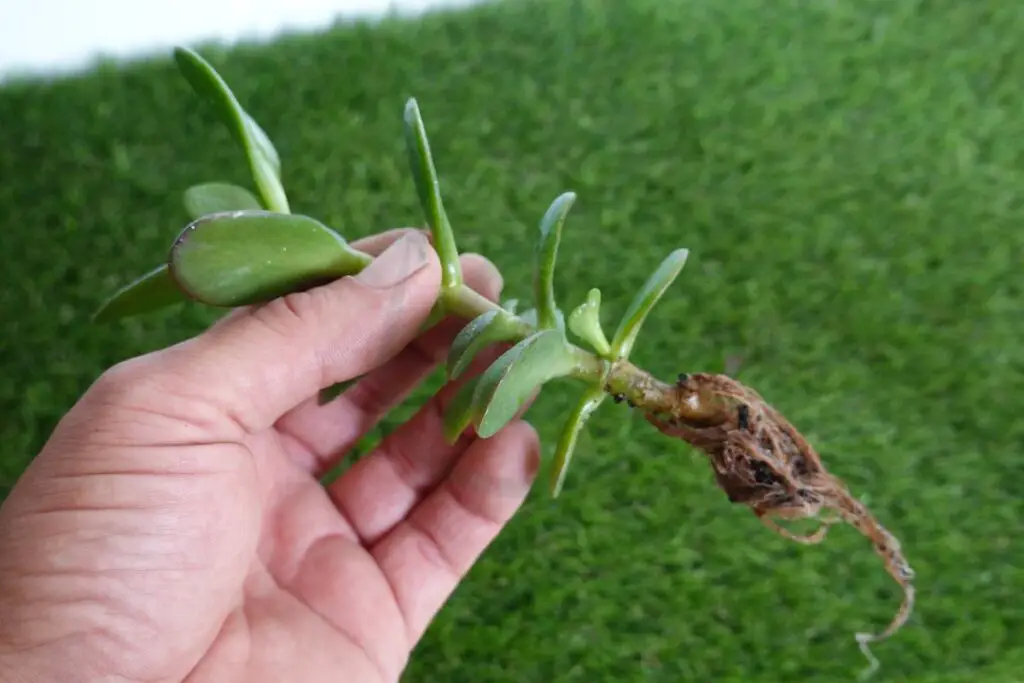
Root Pruning Basics
Root pruning is essential for maintaining the health of Jade bonsai trees. It helps prevent root-bound conditions and encourages new growth. To prune the roots effectively, start by gently removing the tree from its pot.
Carefully trim the outer layer of roots using sharp shears to encourage new root growth. Trim any damaged or excessively long roots to maintain a healthy root system. Finally, repot the tree in fresh soil to support its growth.
Repotting Schedule
Regular repotting is crucial for Jade bonsai trees to refresh the soil and promote healthy growth. For young trees, repot every 1-2 years, while older trees may require repotting every 3-5 years. Signs that indicate it's time to repot include slow growth, water draining slowly, or roots growing through drainage holes.
Follow a schedule based on the age and growth rate of your tree to ensure optimal health and vitality. When repotting, carefully remove excess soil around the roots without damaging them and replant in fresh soil.
Soil Considerations
Choosing well-draining soil is vital to prevent waterlogging and root rot in Jade bonsai trees. Opt for a mix that includes components like akadama, pumice, and lava rock for optimal drainage. The ideal pH level ranges between 6.0-7.5 for healthy root development.
Prepare the soil by sifting out fine particles that can lead to compaction over time. Maintain proper moisture levels by watering when the topsoil feels slightly dry to touch but not completely parched.
Pest Management
Identifying Pests
Common pests that can harm Jade bonsai trees include aphids, spider mites, and mealybugs. These pests feed on the plant sap, causing yellowing leaves and stunted growth. Signs of infestation include webbing, sticky residue on leaves, and visible bugs. Damage from pests can weaken the tree and lead to leaf drop or even death. To combat these pests, regularly inspect your tree for signs of infestation.
One effective method is to introduce beneficial insects like ladybugs that prey on harmful pests. neem oil or insecticidal soap can be used to control aphids and spider mites. For mealybugs, a mixture of water and rubbing alcohol applied directly to the insects can help eliminate them. Proper watering and adequate sunlight also play a crucial role in preventing pest issues.
Natural Remedies
When dealing with common problems like pests, fungal infections, or nutrient deficiencies in Jade bonsai trees, natural remedies offer a safe and eco-friendly solution. Using organic solutions not only treats the issue but also promotes overall tree health. For instance, a mixture of baking soda and water can help combat powdery mildew, a common fungal infection affecting bonsai trees.
Creating homemade remedies using ingredients like garlic, cinnamon, or apple cider vinegar can effectively address various problems without harming the tree or the environment. These natural treatments are easy to prepare at home and provide an alternative to chemical-based products that may have adverse effects on the tree's well-being.
Preventive Measures
To safeguard Jade bonsai trees from common issues such as over-watering, under-watering, or sunburn, proactive measures are essential. Over-watering can lead to root rot, while under-watering causes stress to the tree. Sunburn occurs when the tree is exposed to intense sunlight for prolonged periods.
Maintaining a consistent watering schedule based on the tree's needs, ensuring proper drainage in the pot, and placing the bonsai in an area with adequate sunlight protection are critical preventive steps. By monitoring environmental conditions closely and adjusting care practices accordingly, you can create an optimal growing environment for your Jade bonsai tree.
Proper Placement
Indoor Positioning
When positioning Jade bonsai trees indoors, consider sunlight and temperature needs. Indoor conditions greatly influence growth and well-being. Choose an optimal location within your home for the tree's development.
Outdoor Considerations
Growing Jade bonsai trees outdoors offers benefits like increased sunlight exposure and better air circulation. However, challenges such as temperature fluctuations and pest control may arise. Tips on transitioning indoor-grown Jades to outdoor settings are essential.
Advanced Techniques
Wiring for Shape
Jade bonsai trees can be wired to guide their growth and achieve specific shapes. By carefully wrapping wire around branches and trunks, you can influence their direction and movement. Different wiring techniques, such as clip-and-grow or wrap-around, offer varying levels of control over branch positioning.
To wire Jade trees effectively, start by selecting the right gauge wire based on the tree's thickness. Avoid leaving wires on for too long to prevent scarring. When wiring, ensure the bends are gentle to avoid damaging the tree. It's essential to monitor the tree regularly and make adjustments as needed to maintain the desired shape.
Creating Landscapes
Designing landscapes with Jade bonsai trees involves combining them with other plants and elements to create visually appealing arrangements. Incorporating principles of landscape design like balance, proportion, and harmony is crucial for a cohesive look. You can create miniature gardens by arranging Jade trees alongside rocks, moss, or small figurines.
When designing bonsai landscapes, consider factors like scale and color coordination to enhance the overall aesthetic. Experiment with different layouts and compositions to find a style that suits your taste. By incorporating various textures and heights, you can add depth and interest to your bonsai landscape.
Troubleshooting Common Issues
Yellowing Leaves
Yellowing leaves in Jade bonsai trees can result from over-watering, nutrient deficiencies, or pest infestations. To diagnose the issue, observe if the yellowing is uniform or patchy, and check for pest presence. Solutions include adjusting watering frequency, fertilizing with a balanced formula, and treating pests promptly.
Dropping Leaves
Leaf dropping in Jade bonsai trees may occur due to environmental stress, over-watering, or root problems. Identify the cause by examining the soil moisture levels, root health, and environmental conditions. Prevent leaf drop by maintaining proper watering practices, ensuring good drainage, and repotting if root issues are detected.
Slow Growth
Factors like insufficient sunlight, poor soil quality, or being root-bound can lead to slow growth in Jade bonsai trees. Diagnose by checking light exposure, soil composition, and root system health. Promote healthy growth by providing adequate sunlight, repotting with suitable soil, and pruning roots if necessary.
Final Remarks
In mastering jade bonsai care, you've learned the essentials from basics to troubleshooting. By starting with cuttings, following care guidelines, and employing pruning techniques, your bonsai will thrive. Remember root care, pest management, and proper placement for optimal growth. Explore advanced techniques to elevate your skills further.
Maintain a keen eye on your jade bonsai's health and growth. Share your newfound knowledge with fellow enthusiasts and keep refining your techniques. Your dedication will result in a flourishing jade bonsai that brings you joy and tranquility.
Frequently Asked Questions
How do I start growing a Jade Bonsai tree from cuttings?
To propagate a Jade Bonsai tree from cuttings, follow these steps:
- Select a healthy branch to cut
- Dip the cutting in rooting hormone
- Plant the cutting in well-draining soil
- Keep the soil moist but not waterlogged
- Provide indirect sunlight for optimal growth
Can you provide essential care guidelines for a Jade Bonsai tree?
To care for your Jade Bonsai tree, remember to:
- Water sparingly but regularly
- Place in bright, indirect light
- Use well-draining soil
- Fertilize during the growing season
- Prune to maintain shape and size
What are some common pruning techniques for a Jade Bonsai tree?
Pruning techniques for a Jade Bonsai tree include:
- Regular pinching to promote branching
- Structural pruning to shape the tree
- Root pruning during repotting
- Removing dead or unhealthy branches Remember to sterilize tools before pruning.
How should I care for the roots of my Jade Bonsai tree?
Root care is crucial for a healthy Jade Bonsai tree. Follow these tips:
- Repot every 2-3 years to prevent root-bound conditions
- Trim overgrown roots during repotting
- Check for root rot and address promptly
Where is the best placement for my Jade Bonsai tree?
Place your Jade Bonsai tree in an area that receives:
- Bright, indirect sunlight for at least 4 hours daily
- Protection from harsh afternoon sun Avoid placing near drafts or heating vents. Rotate the plant periodically for even growth.
Image Source: Paid image from CANVA

